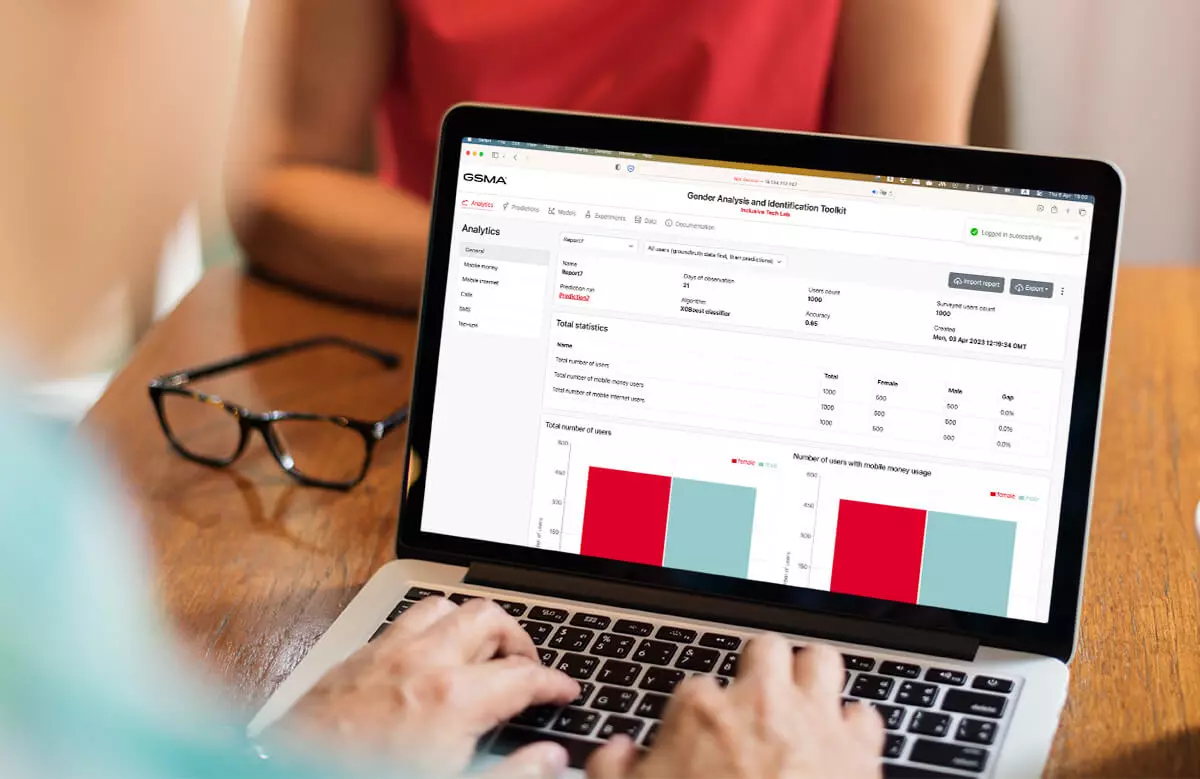AI Gender Analysis and Identification
AI gender detection solution to help close the gender gap in mobile phone access and use.

AI gender detection solution to help close the gender gap in mobile phone access and use.
-
ChallengeGender analysis & identification toolkit development
-
SolutionDockerized app for subscriber gender analysis & identification
-
Technologies and toolsDocker, Node.js, React, Python, Celery, Redis, Flask, PySpark, Pandas, Scikit-learn, LightGBM, XGBoost, HyperOpt, SHAP
Client
The Client is GSMA, a global organization unifying the mobile ecosystem to discover, develop and deliver innovation foundational to positive business environments and societal change. They represent mobile operators and organizations across the mobile ecosystem and adjacent industries.
The Client approached InData Labs to support the Inclusive Tech Lab on advancing their existing system that performs gender detection AI of mobile phone users.
Challenge: gender analysis & identification toolkit development
Women are a powerful source of growth, they are crucial to a country’s development. Inequalities between men and women can reduce nationwide progress in health, education, and standard of living. Today, women still face systemic, and importantly, often unmeasured, barriers to catching up and closing the gender gap.
When it comes to connectivity and the mobile industry, across low and middle-income countries, 390 million women are unconnected, and 184 million fewer women than men own a mobile phone. Yet women are not just a “segment”, but half of the potential customer base. This is a challenge and an excellent opportunity for telecom operators worldwide. Closing the gender gap can benefit women, society, and the mobile industry in general.
To close the gender gap, GSMA needed to close the gender data gap. Today, mobile phone operators across low- and middle-income countries need more KYC data to be able to better understand bottlenecks in mobile phone penetration among women and design products targeted to women.
To address the gender data gap and manage mobile phone data analysis, GSMA Connected Women, in partnership with InData Labs, was challenged to develop a Gender Analysis and Identification Toolkit.
Solution: dockerized app for subscriber gender analysis & identification
The main objective of developing the toolkit was to provide mobile network operators (MNOs) with a tool they could easily install and run on-premises to predict high-quality gender labels for their subscriber base and to get insights from the analytics dashboard.
The InData Labs team, in support with the GSMA Inclusive Tech Lab refactored and improved the existing toolkit bringing a more complete analytics environment to attend to the mobile operator’s needs. Working closely with our Client, we have built the 3.0 version of the product.
The solution components are deployed and operated within Docker containers. The architecture is structured in a way that the MNO can run the system on their premises or in the cloud. The use of the tool involves three main steps:
- Raw Data Preparation: The user begins by specifying the location of various raw data files, such as survey data containing ground truth gender labels, call detail records, mobile money transaction history, etc. This step involves preparing and organizing the necessary data for further analysis.
- Modeling: In this step, the user runs experiments to identify the optimal classification model for predicting the gender of subscribers. By leveraging the specified datasets, the user can train and evaluate various models to determine the one that delivers the best performance.
- Prediction Generation and Analytics Reporting: Once the preferred classification model is identified, the user proceeds to generate gender predictions based on the trained model. These predictions are then utilized to generate a comprehensive analytics report. The report aims to offer valuable information for decision-making and strategic planning within the MNO.
The whole flow is presented below:

The primary objective for the InData Labs team was to create a user-friendly, adaptable, and flexible solution. It enables users to effortlessly explore various machine learning algorithms and experiment with different models to identify the most effective one.
The solution offers a streamlined pipeline that can be configured and executed without the need for extensive technical knowledge.
Addressing the challenge of managing huge volumes of data while maintaining a resilient workflow was a key priority.
Result: closing the gender gap and providing a more inclusive ecosystem
The result of our work is an advanced Gender Analysis and Identification Toolkit. The beauty of the solution is that it allows mobile network operators to identify the gender of their subscribers based on phone usage history and provides insights into the gender gap. Using the solution, they can explore the latest data on mobile gender gap and understand what’s needed to be able to close it.
We are grateful to the GSMA team for inviting our company to collaborate on such a complex and challenging project. We’ve completed the deliverables on time and met the Client’s expectations.

